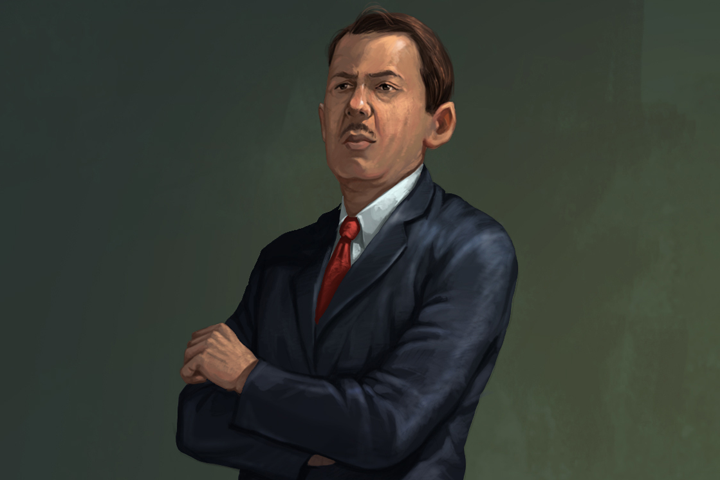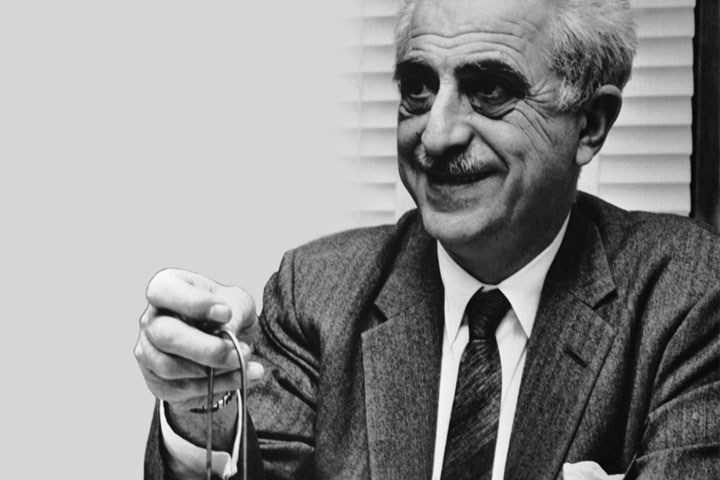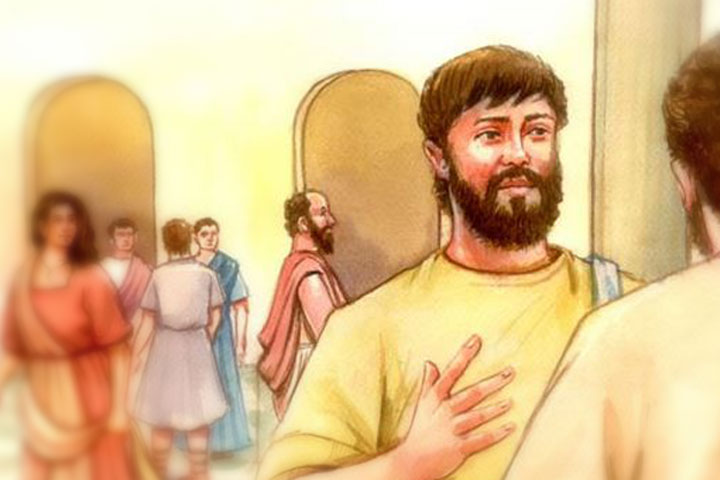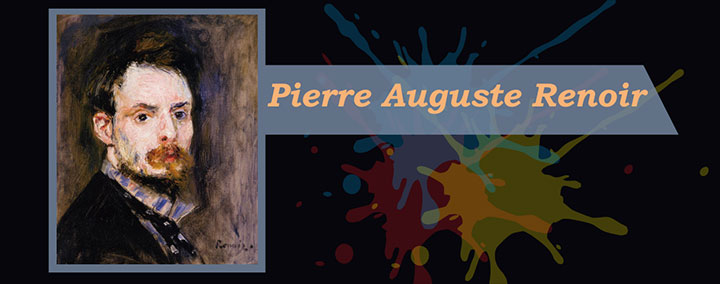
Of all the great nations of Europe, none represents the pursuit of arts as passionately as France. From the medieval ages on, through to the industrial revolution, French artists have striven to make their mark on the world of art and carve a niche for themselves.
August Pierre Renoir (1841-1919), made a special place for himself in this lineage of artists, and remains one of a handful of artists who can claim to have started an entire movement in art by themselves. Renoir, along with his companions Cezanne, Monet and others pioneered the movement known as “Impressionism”. They broke away from the comfort of the prevalent artistic practices in France, and strove to make their own statement, through the use of bright colors, which reflected sunlight and the interplay of shadows in a completely new manner. Impressionism reflected the confidence of a New France, one that was ready to move out of the dark ages and embrace its new status as the art capital of Europe.
Renoir did not limit himself to this new style and continued experimenting and growing as an artist. He started to paint from a very early age and continued to do so almost till the day he died. His favorite themes were beauty, sensuality and the outdoors, and in his later years he championed a return to the more innocent days of the past. He has often been hailed as one of the most talented and influential French artists of all times.

Pierre-Auguste Renoir was born on 25th February 1841, in Limoges, France. His parents were a working class couple; his father, Leonard Renoir was a tailor, while his mother – Marguerite Merlet was a seamstress. Pierre was the sixth child out of seven in the family. The Renoir Family moved to Paris when he was 4 years old, to a house located very close to the Louvre, which is the most famous art gallery and museum in France.
In Paris, the Renoir family attended St Eustache’s Church in Halles district. Pierre received his education from the church school, and also sang in the church choir. From an early age the young boy displayed an extraordinary talent for drawing and singing. His teacher Charles-Francois Gounod appreciated Pierre’s singing abilities, and even went as far as to suggest that Pierre had a future as an opera singer, if trained well. However, his parents felt that the impoverished family could not afford to spend money on the young boy’s musical training, and enrolled him into an apprenticeship as a porcelain painter instead. Porcelain painting was a rewarding career in the mid-eighteenth century France, and the large family needed all the working hands it could muster.
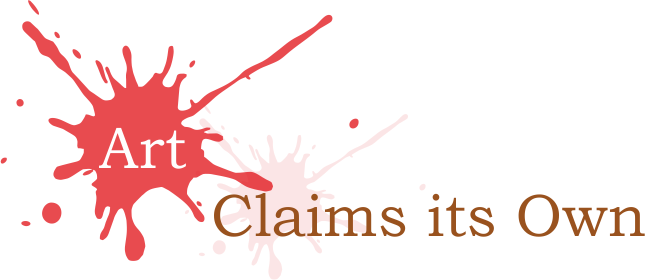
Auguste Renoir began his apprenticeship at the age of thirteen, and continued to learn porcelain painting for the next four years. He was required to paint everything from birds and flowers to landscapes and profiles of famous people on fine china. He soon became one of the best painters in the factory,but did not earn much money as the apprenticeship limited him to learning skills rather than earning actual wages.
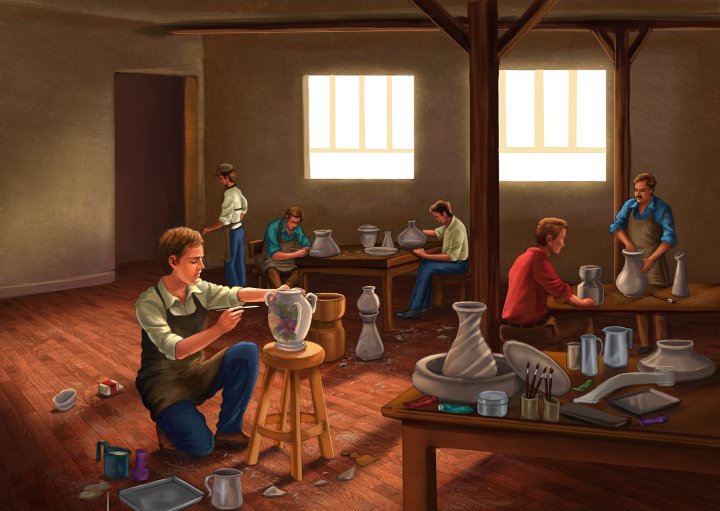
In order to supplement his income, he started decorating window blinds, fans and hanging designs for missionaries. He also attended free painting classes under sculptor Louis-Denis Caillouette at an art school sponsored with city funds. In his free time, he visited the Louvre, where he was exposed to the art of the great French masters, which influenced him profoundly.
Meanwhile, the industrial revolution in Europe was changing the way of the manufacturing processes. Machines were taking over the roles of men, and soon artisans and craftsmen found themselves affected by new work practices too. A new printing machine, which could print on porcelain, rendered most of the French porcelain painters workless.
A young Auguste Renoir was forced to find other work in order to earn money, and his skilled hands ensured that he was not short of odd jobs. His love for the Louvre was soon rewarded when he was commissioned as a copyist by the museum, churning out official reproductions of works of the great masters he admired, for sale to the museum visitors. He was thus employed at the museum from the age of 19 to 23, laying a solid foundation in canvass painting to supplement his porcelain painting skills.

In 1862, at the age of 21, he also began studying art formally under Charles Gleyre, at his studio - Ecole des Beaux Arts, in Paris. It was there that he met Monet, Sisley and Frederic Bazille, who became his friends and the young group of painters soon began to influence each other’s art. They were particularly interested in exploring new ideas of art in the vein of Courbet and Manet, who preached a new realistic approach as opposed to the centuries old religion dominated art scene of Europe. He was often forced to share paints and supplies from his colleagues as he could not afford to buy new ones for himself. Despite this, Auguste Renoir started displaying his work at the Paris Salon, a prestigious annual exhibition of art in Paris, from 1864 onwards. Six of his works, including the famous “La Ismeralda” (inspired by Victor Hugo’s Notre Dame De Paris) were accepted for display.
His work did not attract much attention then, and he remained just another unknown artist. In spite of receiving no recognition, he carried on painting feverishly even during those years. In 1865, he painted a portrait of his friend William Sisley’s father, which was chosen for display at the Paris Salon. In search of paid work, Renoir sought more commissioned portraits, but he still had to depend on his friends often for kindness as well as shelter, as he had no home of his own and no fixed address. The artist James Le Coeur and his family supported him through these tough times and gave him a roof above his head when he had nowhere else to go. In addition, their forested chateau near Fontainebleau provided Renoir with a scenic getaway where he could paint landscapes without any disturbance.
Soon Auguste Renoir began to grow disillusioned with Gleyre’s style of teaching and recommended to his newfound group of artist friends that they branch out on their own. They found patronage under the aristocratic artist Edgar Degas and began to explore new ideas of art, free from the stifling tutelage of Gleyre. The group started studying the principles of light and the mingling of colours in the eye when displayed side by side, as per the theories of Chevreul. They would converge at the Café Guerbois every evening to discuss ideas, where they would be joined by other young upcoming artists of their generation like Cezanne, Pissaro and Zola, as well as some upcoming writers. Most of the members of this extraordinary group of artists went on to become famous in their own right. On days when the weather was sunny, the group would prefer to travel outside Paris and paint in the countryside, as they wished to utilize natural light instead of the false light in the studio.
Renoir remained very stylistically independent even in this exalted group of artists and refused to follow any hard and fast rules. He would even find natural light disturbing, to paint in sometimes, insisting on painting alone at his studio in Montmartre. He refused to be held down by theory, revelled in using black paint as opposed to many of his contemporaries, displayed an early penchant for smooth surfaces and an aversion to the rough touch, as used by early masters like Van Gogh. While Monet strove to catch the vibration and interplay of light in his landscapes and Cezanne pursued form and colour in geometrical designs; Renoir’s passion was human form – textures of skin, children’s chubby cheeks, the play of light on hair.

Around1867, Auguste Renoir who was now 26 years old, had a brief romance with Lisa Trehot, a seamstress turned art model who modelled for some of his paintings such as “Diana” & “Lisa”. According to some unconfirmed reports the two also had a daughter in 1870, who was subsequently named Jeanne. Renoir never officially acknowledged either Jeanne or the romance with Lisa.
The Franco-Prussian war, which broke out in 1870 and lasted a year, dispersed this group of artists, but all of them returned to Paris at the end of the war. Renoir was drafted into the infantry during the war and was discharged due to severe dysentery before he could see any action on the front. His friend Bazille, was not so fortunate and died in action during the war. The fourth French Revolution broke out in 1871, and was followed by a socialist government for a brief period of time. In a famous incident, some of the socialist soldiers mistook Auguste Renoir for a spy and almost threw him into the Seine River - whose banks had provided him with one of his favourite painting spots, before the matter was sorted out.
It was in 1873, at the age of thirty-two, that Auguste Renoir began painting in real earnest, and found a buyer for his work. He was finally on his way to becoming a paid painter.
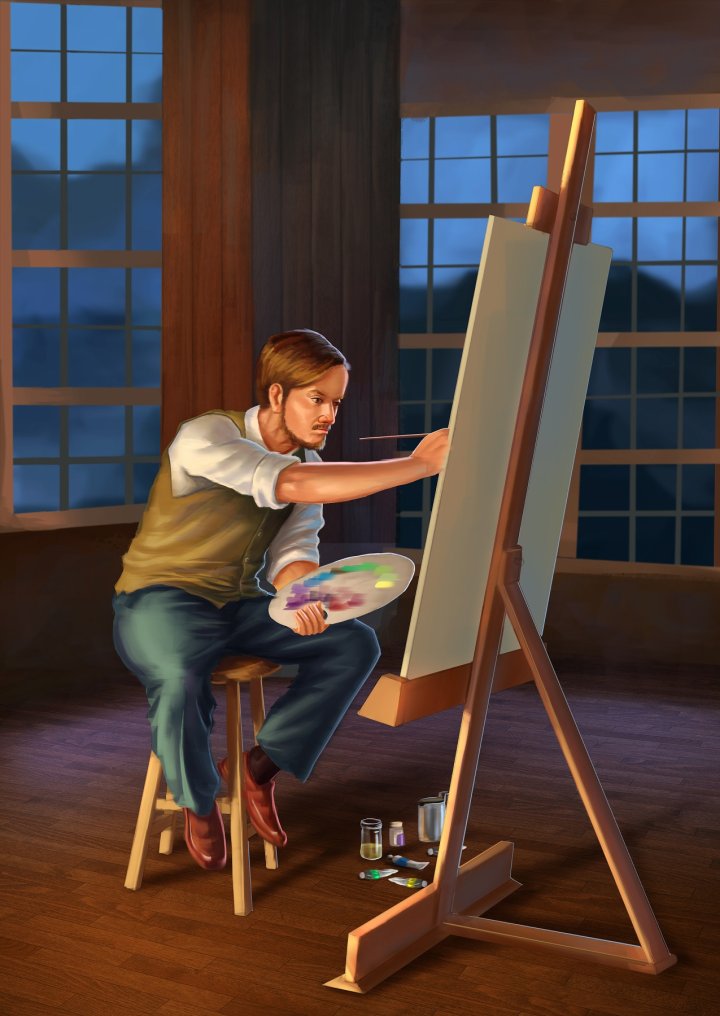
Durand Ruel, an art dealer who had encouraged the group of artists from the very outset, bought some of his works and displayed them in his gallery in Paris. The following year, the group decided to hold their first collective exhibition of works. Auguste Renoir, Monet, Sisley, Pissaro and Moriset displayed some of their paintings, and the exhibition got a great deal of attention; it was heralded as one of the most exciting developments in the French art scene since the Paris Salon. The group began to be known as “The Impressionists” – the name given jokingly by a journalist who found the title of one of Monet’s painting just as amusing as the painting itself. The critic’s initial reaction was that these works on exhibition were more of “impressions” rather than completed works of art. The name stuck, and a new movement in art had begun.
Despite this, Renoir did not taste financial success instantly. French critics, brought up on a staple diet of conformist art, could not appreciate the newfound approach and disliked this new sensibility that Renoir and his friends sought to inject into classical art. Many were initially puzzled by the streaks of sunlight in Renoir’s paintings, which shone through the canvas in a manner completely unprecedented in previous genres of French art. Some even wondered what those “livid spots on people’s faces” meant. When seen from a distance, these paintings presented a whole new viewing experience, in terms of the entire panorama of interplay between light and shadow, colours and darkness. Many critics of the day were appalled by the boldness with which the impressionists challenged the accepted norms of classical theories related to colours in paintings; so vivid were the brilliance and colours in the works of Renoir and his friends.
However, despite the limited financial benefits of the first exhibition of the “impressionists”, Auguste Renoir’s name began to be known around Paris as an artist to be reckoned with. Wealthy patrons were soon inviting him to their homes and social soirees, and paid work began to trickle in. Publisher Georges Charpentier and his wife Marguerite commissioned Renoir to do a series of family portraits, and introduced him to their social circle, which led to more commissioned portraits. "Madame Charpentier and her Children" was displayed at the Paris Salon in 1879. His old friend and publisher Durand-Ruel also started buying much larger numbers of Renoir’s works; in 1881 alone he bought Auguste Renoir’s paintings worth 16,000 francs.
Around the same period, in 1879-80, Auguste Renoir met and got romantically involved with Aline Carigot. She first modelled for him on “Luncheon of the Boating Party”, and subsequently appeared on many of his famous paintings, including "Mother Nursing Her Child".

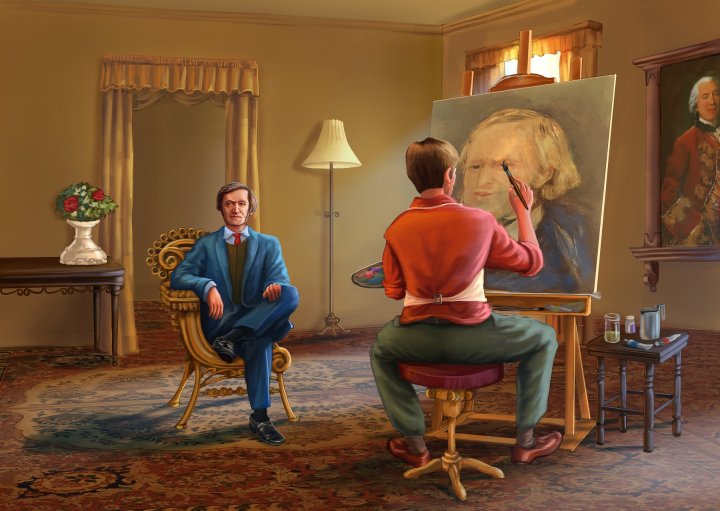
This limited extent of his success gave him some income, with the help of which he decided to explore the world outside France. In 1881, aged forty, he travelled to Spain, Italy, Rome and Algeria, and viewed the works of the masters that had influenced him, like Raphael, Velazquez and Titian. He met composer Richard Wagner in Italy and captured him on canvas in a portrait.
"Dance in the Country," "Dance in the City" and "Dance at Bougival" were also painted around the same time. Aline accompanied him on some of his travels, though the two did not travel as acknowledged lovers. He did not particularly enjoy travelling, and throughout his travels the main interest was the museums and art galleries.
Auguste Renoirs painting style underwent a gradual metamorphosis following his travels, in particular, from what he saw in Italy. The styles of the renaissance masters from Italy influenced him profoundly, leading him to famously declare that he had reached the end of impressionism. The change was most visibly perceptible in “The Umbrella”, which he began in 1881. The right side of the canvas was painted just before he embarked on his journey to Italy, and the left side was completed four years later, in1885, by which time he had absorbed his new influences; leading to a much more tighter, linear and structured approach on the left side of the painting.

Upon return to France, Auguste Renoir spent a summer on the island of Guernsey and created fifteen paintings within a month in a frenetic flourish of inspiration. Most of these were landscapes of the bay and its beaches. Following a brief, productive stay in Guernsey, in 1882, he visited his old friend Cezanne who had chosen the isolation of Southern France to paint in seclusion. The two painted together for a while at Cezanne’s home in Aix-en-Provence, and together they explored a more systematic and controlled style, perhaps indicative of their maturing as artists. They sought to express more aerial perspective and order in their works, a conscious return to the roots of classical art. While as impressionists, they tried to capture the exaggerated presence of lights on their subjects, as well as the momentary, fleeting aspects of life; their new approach led them to seek something more timeless and classical.
Auguste Renoir moved back to his old neighbourhood of Montmartre in 1882. Throughout the rest of the 1880’s, his work displayed a brooding and experimental touch, indicating that this was the most introspective period of his life; what is commonly referred to as the “blue period” in any artist’s life. His romantic companion - Aline, gave him company through these years, and the pair eventually married.
Newer paintings like “The Children’s Afternoon at Wargemont” and “The Bathers” also reflected his newfound style. From 1883 onwards Renoir started focusing much more on nudes, indicating his newfound love for the classical art form and formal technique. This period of his life is now referred to as the “ingres” period, as he paid extra attention to his drawing of figures with an added emphasis on the outlines. Renoir was of the opinion that his newer style of paintings was more suitable to the classical platform provided by the Salon, and declined Durand Ruel’s offer to exhibit them at the seventh group show of the Impressionists. Renoir was also starting to grow mistrustful of Pissaro and Gaugin, and felt that their presence at the Impressionist’s show would lead to depreciation in the collective prices of the artworks. Thus he did not exhibit any of his works at the seventh and eighth iterations of the show which he had had helped to pioneer. This was further reinforcement of his breaking away from the Impressionist movement towards the classical art of the French rococo masters.

In1884 Renoir announced that he was forming a new society of painters called Société des Irrégularistes. The underlying theme of this new society would be to observe and imbibe irregularity in art; just the way nature intended most objects to be asymmetrical and imperfect. Renoir argued that even two eyes on the same face are slightly different from each other, and the petals of a flower differ from each other, so too do artists; they should follow the asymmetric, or irregular beauty of nature in their art, rather than trying to create perfections. Post industrial revolution, European art was beginning to move towards perfect replications of what the artists saw, as art and craft began to grow even more sophisticated with the use of modern techniques. Renoir, on the other hand, proposed to preserve the imperfections of classical art - in a way reflecting his own dislike for the steady march of post industrialization progress.
The following year, in 1885, at the age of forty-four, Aline and Renoir had their first child out of wedlock; a son whom they named Pierre. The start of a family life, meant that Renoir, who had lived a solitary existence so far had something other than art to turn to. He moved out from his studio at rue Saint-Georges and rented a modest sized home for the new family. Gabrielle Renard, a distant cousin of Aline’s moved into the household to help the family with the chores, and soon became one of Renoir’s regular models. The family would often take long vacations into the French countryside, at Aline’s native village.
The serenity and placidness of family life also reflected in some of his newer works such as the great triptych of “Dance” pictures and "Mother Nursing Her Child". Rural landscapes and countryside’s began to appear more regularly on his canvas. In 1887, he contributed several artworks for the golden jubilee celebration of Queen Victoria as a token of his loyalty to the French crown. His last submissions to the salon were in 1890, titled - “The Young Girls at The Piano”, and “The Artists Family”; both of which reflected themes of family life and leisure.
Renoir and Aline were married in 1890, and went on to have two more sons, Jean and Claude. In 1892, Renoir embarked on another world tour to visit the museums of Europe and admire the works of the great masters like Velasquez and Rembrandt. He travelled to Spain, and then to Germany, England and Netherlands.

However, soon after returning to Paris, his health began to deteriorate and he contracted rheumatoid arthritis in 1892. The condition spread rapidly and he soon developed deformities in his hands and shoulders. A fall from a bicycle in 1897 almost broke his right arm – his painting hand, and his vision started to suffer due to partial atrophy of the nerves in the left eye.
The progressive nature of the malady forced Renoir to change his painting style, yet he continued to paint, even when he had to battle physical pain to grasp the brush. By 1902, he was completely in the grip of the rheumatoid arthritis and it started to seriously impede his daily activities. His movements were severely restricted and his hands would tremble violently every time he would attempt to hold the brush. His hands had to be wrapped in bandages, in order to prevent skin irritations, but that only led to the rumour that he could not use his paralyzed fingers anymore and could paint only with the help of a brush strapped to his lifeless fingers. This was untrue, and though he required an assistant to hand him the brush and help grasp it, he continued to paint with the strength of his own muscles.
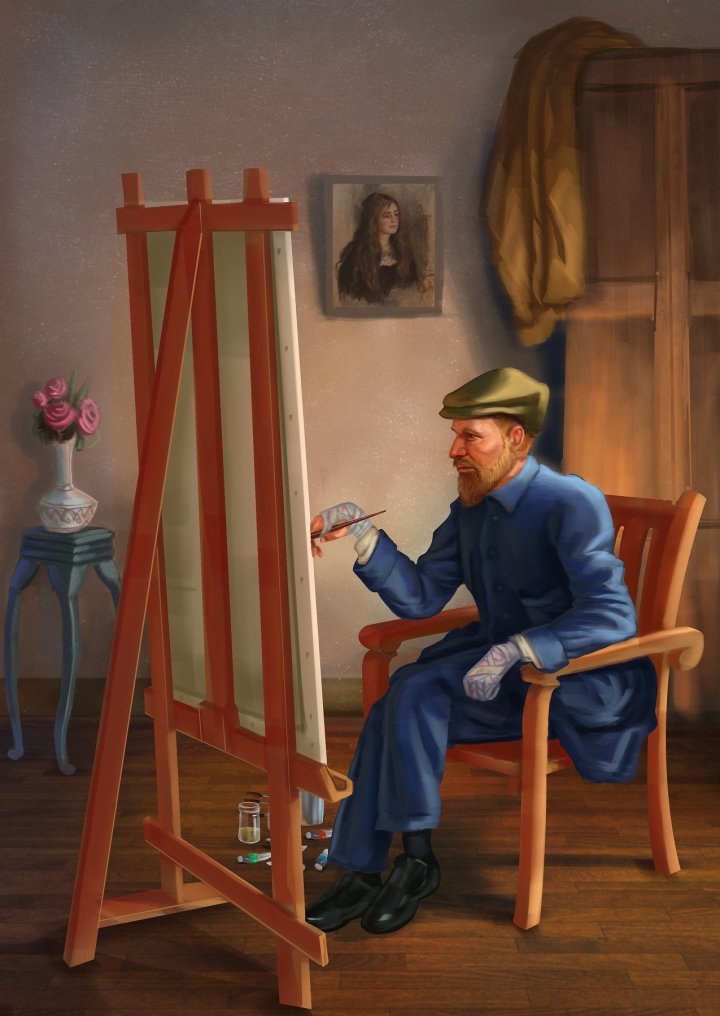
In 1907, the Renoir family moved out of Paris to the sunnier climes of the Mediterranean coast and bought a farm near Cagnes-sur-Mer. The mild, dry climate of the Mediterranean coast helped him to recuperate somewhat, and the sunny house, equipped with all the modern amenities, served to make life easier for the family. They continued to spend the winters there for the next few years, while the summers were spent in the countryside, where they had bought a house at Essoyes, near Aline’s village. Renoir remained physically active despite his ailments, and travelled to Paris frequently to meet old friends and visit exhibitions and museums.

In 1910, Renoir suffered from a stroke and was confined to a wheelchair thereafter. The arthritis had progressively weakened his muscles, and by now the fingers of both his hands were permanently curled. He was forced to use an innovative mechanism that utilized a moving canvas, as his joints did not allow him to move his hands more than short distances. His portrait of Austrian actress Tilla Duriex in 1914 betrays none of the discomfort and physical pain he must have endured while creating the artwork. However he continued to paint with the help of his assistant - Richard Guino and even tried his hand at sculpture. Venus Victorious – a life size sculpture of Venus was completed with the efforts of both men and reflects one of Renoir’s favourite mythological figures.
During the Franco-German war in the opening stages of WW1, his elder sons Pierre and Jean enrolled in the French army and were sent off to the frontlines. Both of them saw heavy action and were wounded in the war fighting. In 1915, his wife, Aline died on the way to meet Jean, while he was recuperating in the south of France.
In his last years, Renoir continued to paint women and children, bathed in bright colours and exuding a lightness of soul and mirth which was very far from his suffering in real life. He was fortunate enough to see his works displayed at the Louvre in 1919, alongside all the masters whom he admired as a young boy. His journey as a painter had begun at the Louvre, where he copied the works of the masters for sale to museum visitors. At the other end of life, his work commanded its own space on the hallowed walls of the Louvre, a befitting recognition for an untiring artist.

August Pierre Renoir died on 3rd December 1919, in the village of Cagnes-sur-Mer. The cause of death was a massive heart attack. His sons Jean and Claude were by his bedside during his final hours. At the time of Renoir’s death, his estate was valued at five million francs and was bequeathed to his three sons. Despite this huge inheritance from their father, the three boys went on to become prominent artists in their own right.
Renoir remains one of the greatest French artists of all time, and his work continues to inspire great tributes till date. As a human being, he represents not just great virtuosity as an artist, but a strong sense of spirit while battling his poverty in the early years and then debilitating ailments in the later years. Renoir, along with the impressionists, helped to define a new movement in art, but returned to the roots of classical art – a reinforcement of the fact that throughout his life, it was he who defined his art, and not the other way around.
Next Biography








